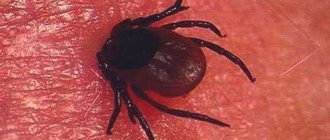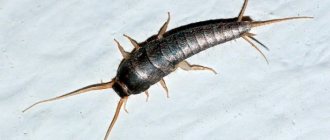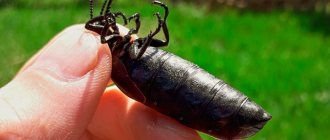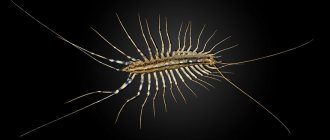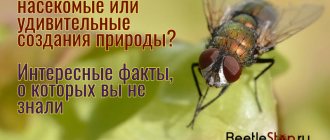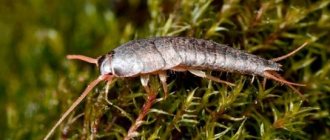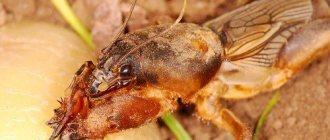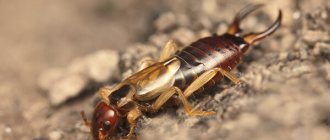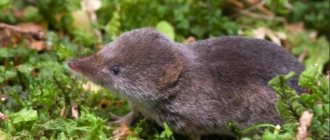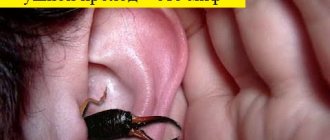Mayflies are ancient winged insects, the remains of which are found in fossils from the Devonian period. More than 3 thousand species have been found and described. The detachment received its name from the short life of the imago. Depending on the species, adult individuals are active from several hours to 4-5 days. They do not feed, only fly in large swarms. In their short life, insects manage to mate and lay eggs. The common mayfly is one of the largest representatives of the family. Real fishermen know that its larvae provide a good bite.
Features of mayflies
It is worth noting that such tiny creatures represent the mayfly order of insects, and have the scientific name cloene. They are also called snowstorms. Many fish feed on them and their larvae with great pleasure. The moths fall into the water, and the fish immediately try to grab the treat and eat it.
Surely you have repeatedly seen how small insects flock to the light of lanterns or the lights of steamships on warm and quiet evenings. These are mayflies. They are very easy to recognize. They have two pairs of transparent mesh wings, and the front ones are always much larger than the back ones. In calm weather it is incredibly interesting to watch their flight. They quickly flap their wings and fly up, after which they freeze and, as if on a parachute, descend down.
The Russian name “mayfly” itself speaks of the short period of existence of these creatures. They live from several hours to two days. Insects are interesting because their larval stage can last for several years, but at the same time, adult individuals have a very short period of time, which is equal to several hours or one day. This developmental paradox is difficult to explain.
Analysis of the poem “Night” by Pasternak
Among all the poems of Boris Pasternak, the work “Night” stands apart. It was written in 1957 and belongs to the late work of the poet. An unusual space for his lyrics was chosen - a world torn apart by progress, and the fragmentation of which the author is trying to restore. Most likely, the creation of this work was influenced by the work of Antoine de Saint-Exupéry.
At the very beginning, it seems that Pasternak is talking about simple, everyday things - about people who are forced or voluntarily awake in the night. It combines both night work and night entertainment. The lyrical hero is represented by a pilot who observes the world from above, rising above the planes - into outer space.
Completely different people are mentioned in one way or another - stokers, idle revelers, stokers, artists. You can almost hear the sound of bars, trains, and stations. The night world is engulfed in some kind of special fire, invisible to the eye in the light of day. Night in culture has its own mystical meaning, meaning both the arrival of inspiration and the time of awakening of otherworldly forces.
The poet seems to rise above himself, above the world, observing it from a height not even of flight - of cosmic bodies. Even the stars look at the restless Earth, which does not fall asleep completely even at night. Through this flight, the theme of power and strength that those very distant Mars and Venus have is conveyed, for they have capabilities that are inaccessible to an ordinary person. Likewise, the creator has the ability to create new worlds and spaces.
However, the main motive of the work can be traced only towards its end.
An artist is obliged to create at any time of the day; sleep for him is an unaffordable luxury, during which he may miss something important. If the sky for a pilot is a canvas on which he draws patterns of flight, then for an artist it is a canvas for patterns of thought.
The work is written in iambic trimeter, which is rare for Boris Pasternak, with a two-syllable line with stress on the 2nd syllable. The rhyme throughout the poem is cross, predominantly masculine. The genre is mixed - meditative lyrics and elegy.
Such literary devices are used as epithets (“night bars”, “a terrible lurch”, “sleeping world”), personification (“celestial bodies are wandering huddled together”, “Venus or Mars are looking”), metaphors (“becoming a cross on fabric”, “continents are burning”, “hostage to eternity”), hyperbole (“limitless spaces”), repeated anaphora.
What does a mayfly larva look like?
But the larvae of these insects develop in water. They have a slender body and developed legs, as well as tufts of tracheal gills on either side of the abdomen. One mayfly larva has seven pairs of gills, similar to flat oval plates.
The first six pairs always oscillate, but the seventh remains motionless. First, the first pair begins to move, followed by the second, etc. Thus, a constant flow of water is formed, running from the front to the rear gills. An interesting fact is that in water enriched with oxygen, the movement of the gills is significantly slowed down. But if there is not enough oxygen, then they move so intensely that a “shine” effect is created around them.
Description
Mayfly (Latin Ephemeroptera - from the Greek "ephemeron" - fleeting, quickly passing, and "ptera" - wing). Mayflies are an ancient order of winged insects, including about 1,500 species, distributed throughout the globe except the Hawaiian Islands in the Pacific Ocean and St. Helena Island in the Atlantic Ocean. Mayflies are formed from larvae that live in silt and clay soils below the water level.
Characteristic features of mayflies are three (less often two) thin long tail filaments at the end of the abdomen. The mass emergence of mayflies occurs in mid-summer in the evening and lasts only a few days. The emerging mayfly literally fills the entire air space above the river and falls into the water like snow flakes, which is why its second name comes from the snowstorm.
Mayfly larva, or “granny,” is also a good bait. The larvae live in the clayey soil of the underwater shore or in dense tangles of underwater plants. The larvae are whitish in color, have two antennae in front and three fleecy tails in the back.
The mayfly order is divided into several families:
- Family BAETIDS (Baetidae)
. Representatives of the family live mainly in stagnant bodies of water and are characterized by legs pointing to the sides. - Family HEPTAGENIIA (Heptageniidae)
. The larvae have a moderately elongated body, flattened in the dorsoventral direction. Their legs are long, tenacious, their tail filaments are long - these larvae deftly crawl among stones and underwater plants. - Family Mayflies (Oligoneuridae)
. The larvae are distinguished by their large size and compressed body, and their tail filaments are short, shorter than the length of the body. - Family TRUE MAYFLY (Ephemeridae)
. Their larvae have an elongated cylindrical body with strong burrowing legs. These larvae dig tunnels in the clayey soil of slow-flowing rivers. - Family PROSOPISTOMIDS (Prosopistomidae)
. The larvae of this family are distinguished by a very wide, leaf-shaped, compressed body; their gills are hidden under the lateral processes of fused segments, so that they form a gill cavity. The tail appendages of these larvae resemble the fork of lower crustaceans. These larvae live in fast streams under stones.
There are about 2,000 species of mayflies known in the world. About 250 species have been recorded in Russia, about 100 of them are found in the European part. Our most common mayflies belong to the families Double-tailed, Thin-skinned, Seven-day and True mayflies. The most numerous and smallest are two-tailed mayflies. And the largest Russian species is the common mayfly, 15–20 mm long, with brown wings.
What do mayfly larvae eat?
The larvae feed on particles of organic substances, which are so small in size that they do not attract other aquatic inhabitants. The mayfly larva is capable of converting this waste into the substance of its body, in turn, it serves as a source of food for birds, fish, amphibians, and predatory aquatic insects. The life of these creatures is full of dangers; not all of them survive to adulthood. Only a few of them live at the bottom of the reservoir for about two years, molting a huge number of times. And after leaving the water, they exist only for a couple of hours, after which they die. The wings of an adult insect are very delicate, and the legs are incredibly weak for walking.
What does an adult mayfly larva eat? The insect's mouthparts do not function, and sometimes are completely absent. This is due to the fact that an adult creature simply does not feed. The insect's digestive system is filled with air, which creates additional lift that helps the mayfly's fragile wings. The insect's mouthparts are simply not designed for feeding. It seems that such unadapted creatures appeared quite recently. But this is absolutely not true. Fossil remains of these insects were found even in the layers of the late Permian period, their age is 250 million years.
Characteristics
The stick insect is a master of disguise and makeup
. To avoid becoming prey, he acquired many defense mechanisms. They have an amazing feature: the shape of their body resembles tree branches or leaves. Most of the time it hangs on a branch. By completely merging with the plant, the stick insect becomes invisible. It can be mistaken for a thin twig, leaf or twig.
They are active mainly at night. The day is spent in a frozen state, firmly clinging to the branches. Suction cups on the tips of the legs allow you to hang even upside down. The exoskeleton is remarkably similar to the bark. And the joints imitate knots on branches
. The insect eats the entire leaf, leaving not a single piece that could give away its location.
They are characterized by the phenomenon of catalepsy - imaginary death. When in danger, he literally dies. And he won’t get out of his stupor for anything in the world. Even if you bend it like a branch. Frozen in such an awkward position, the stick insect will not react even if its wing or leg is torn off, which it can grow back during the next molt. And when the threat cannot be overcome, the stick insects stand on their long hind legs and raise their tail, imitating a scorpion. And if such a demonstration of strength does not frighten the enemies, then the males release their protective liquid, with a characteristic unpleasant odor reminiscent of peanut butter.
If a stick insect moves, it is never in a hurry. Moves slightly swaying as it goes. So, he doesn't look like an insect. This is how a thin blade of grass sways in the wind. Usually stick insects crawl upward. It's not comfortable down there. It's dark and there are predators.
Stick insects are prey for birds
. The bird sits on a branch for a long time, looking for an insect among the branches and foliage. Waiting for him to move at least a little. As soon as the stick insect performs any action, the bird will grab it with its beak.
Adult mayfly: reproduction
When mature they reach two or three centimeters. In the caudal section, the mayfly larva has three caudal, very long filaments, which are its distinctive feature. These threads help them swim, their action is similar to flippers or a tail.
It must be said that an adult insect does not live long. Its life cycle is equal to the time required to participate in the mating flight, which takes place in the evening on the shore or over the river. From a whole swarm of males, only one representative quickly flies out and grabs the female, who is ready to reproduce. There are a large number of eggs in her body. She releases them into the water and dies herself. The morning after such a mating dance, all the banks and surface of the water are strewn with dead insects. This is how one mayfly larva ends its life cycle and a new life begins.
Iwamasa's Tarcher Nymph
Hook: N? 10 - 18, Straight eye, English-Style Bait Hook or similar, Mustad 37160 or Partridge YK2B, Yorkshire Caddis Hook
Mounting thread: brown, 6/0-8/0
Loading: thin lead wire or foil
Tail: dark brown cock feather barbs
Winding: silver or gold thin wire
Body: Reddish-brown dubbing mixture
Wing primordia: a segment of a turkey's flight feather, colored in dark tones (from dark brown to black)
Legs: dark brown or black rooster feathers, trimmed from the wing buds
Breast: Reddish-brown dubbing mixture
5. Bead Head Twist Nymph , designed by Gary LaFontaine, is a family of flies from the iconic knitter. Performed on a hook with an extended shank; the body is knitted from dabbing yarn, formed using the dabbing loop method from finely chopped Antron-type shiny fibers. Before winding around the shank of the hook, this thread is twisted with the barb of a feather from the tail of a peacock, pheasant or ostrich. The fly is equipped with a head made of a metal ball and a short fluffy feather tail. Lafontaine believes that the described method of knitting the body quite accurately imitates the vibrations of the tergalia and the shine of the body of a real insect. In the author's opinion, these flies are most suitable for simulating mayflies of the genus Isonichia.
The further fate of the larvae
In the Great Lakes region of northern America, there are years when trucks haul away swarms of insects from city streets, covering roads and driveways in large layers, making them incredibly slippery. Having completed the mating dance, the adult insect dies, but the eggs that fall into the water are just beginning their life cycle. They have an excellent mechanism to help them survive. Each egg is equipped with thin threads that unfurl the moment it first touches water. Such threads have adhesive areas, thanks to which the egg can be held at the bottom of the reservoir.
Mayfly larvae often become victims of dragonfly larvae. This predatory insect not only eats its own kind, but also preys on tadpoles and fry. There are plenty of enemies in the life of mayflies, so not all of them complete the full life cycle.
Instead of an afterword
Such amazing little creatures as mayflies have a fairly long period of underwater existence and a very short and rapid life in the adult stage. Their bright but short flight sometimes seems fabulous and ephemeral.
fb.ru
In today’s article I wanted to talk a little about entomology, but more precisely about what a fly fisherman needs to know about the insects that live in the area in which he is going to fish.
Many of you will say why do I need this, all the flies that imitate insects are already known, you can just take the right fly and go fishing. Unfortunately, if you don’t know or understand what the fish is currently feeding on and what insect it prefers now, your fishing may not be successful.
A fly fisherman certainly doesn't have to become an entomologist, but you do need to acquire a basic knowledge of insects.
First, let's look at what stages of development insects have; these stages are usually called metamorphosis or transformation.
As can be seen from the above diagram, the insects that we will talk about have different stages of development, and each stage has a different duration. The form of an insect at the stages of transformation is very different from adult insects in appearance. This fact applies more to insects with a full cycle of transformation, for example: butterflies, beetles, caddis flies, and flies.
Insects that do not have a complete transformation cycle are characterized by the fact that one form gradually transforms into another. The larvae, hatched from eggs, sometimes similar and sometimes different from the adult insect, do not pupate, but only molt.
After each new molt, the larva becomes more and more similar to an adult insect. It is these larvae that are of greatest interest to fly fishermen and are called nymphs or naiads.
Imitation of the mayfly nymph has become widespread among fly fishermen. Today we will talk about this insect.
Mayflies (Latin: Ephemeroptera) which means one-day or lasting no more than a day. At the moment, there are more than three thousand species of mayflies, which are distributed throughout the world with rare exceptions. Some of the diversity of these insects lives on the territory of Russia. Of course, I won’t list them; no one will remember anyway, and there’s no point in doing so. The main thing for you is to find out what specific species lives in the area where you are going to fish.
In the future I will talk about mayflies as a general average insect. As I already said, mayflies are insects with incomplete metamorphosis, and the first stage is the egg, which interests us little since it is not food for fish.
But we are especially interested in nymphs (larvae). First, let's look at the general characteristics of all mayfly nymphs.
The mayfly larva has a length of 6-30 mm excluding the tail, a relatively long abdomen and a short chest with wing rudiments. The nymph also has a clearly defined head with large eyes. The abdomen consists of 10 segments on the sides of which there are tracheal gills - tergalia.
The legs of the larva are well developed and are able to press against the body; due to this, the larva swims very well, making wave-like movements with its abdomen and using its tail as a horizontal fin.
The ability to swim, moving the abdomen up and down, and not left and right, is a distinctive feature of mayfly larvae from dragonfly larvae and stonefly larvae.
Mayfly larvae actively feed, unlike the imago and subimago stages, which do not feed at all. The larvae feed on organic debris and small algae; some species are predators and feed on ciliates and other small animals.
Mayfly larvae are an indicator of clean water and are very sensitive to the presence of chemical compounds in water.
According to their lifestyle, all mayfly larvae are divided into four types:
- FREE-FLOATING Nymphs (swimming nymphs)
They live mainly in calm waters between vegetation. They have an elongated cylindrical body and are able to swim well. The head is small, there may be two or three tail appendages. The size of the larvae is from 6 to 20 mm. Almost the entire group of this type is present in Russia.
- burrowing or burrowing nymphs
They live in stagnant or weakly flowing waters, with sandy and silty soil. They live in burrows dug in the ground and spend almost their entire lives in these burrows. Such nymphs have massive jaws and powerful legs, with which they dig the soil. They have three tail appendages. Sizes from 8 to 30 mm. This group includes “True Mayflies” (Ephemeridae), “Coastal Mayflies” (Polymitarcyidae), “River Mayflies” (Potamantidae). All three families are represented in Russia.
- Clinging or sticking nymphs (dinger)
They live in fast-flowing waters. The body is flat and not as long as that of previous nymphs. Adapted to cling to rocks in fast flowing water. There are three caudal appendages. Body length is from 6 to 16 mm. This group includes mayflies of the family “Seven-day mayflies” (Heptagem'idea).
- Crawler nymphs
They most often live in weakly flowing or standing waters. Such nymphs do not swim, but crawl through algae or sit on rocks. But such larvae are still similar to free-swimming nymphs. The body of such a larva is less elongated relative to actively swimming larvae. There are three caudal appendages. The length of the larvae is from 6 to 16 mm.
While on a body of water, it is advisable for a fly fisherman to determine whether a larva belongs to one group or another. The older the larva, the easier it is to determine its identity. The age of the larvae can be determined by the color of the wing primordia; in adult larvae ready for transformation into subimago, the wing primordia are dark.
Depending on the type of mayfly, their larvae can live in water from one to three or four years. During this time, the larva can molt up to 25 times. And so, when the time comes, the larva rushes upward, to the surface of the water, onto coastal plants or stones, to molt for the last time and turn into a subimago. At the moment, the larvae are especially vulnerable.
Flies that imitate this stage of insect development are called emergers. This is a purely fly fishing term and you will not find such a name in entomology. Flies of this type are very catchy at a certain moment.
Some larvae, having reached the surface of the water, die without throwing off the chitinous layer, and are carried away by the current of water. Such dead larvae also attract fish and, accordingly, there are flies that imitate such dead larvae.
The subimago stage of the mayfly has the English name Dun. Accordingly, the names of flies that imitate this stage contain this word, for example, Olive Dun, Sparkle Dun.
Sometimes this name is also found in imitation of the imago stage, this is due to the fact that the imago and subimago sometimes do not differ much in external characteristics. The subimago is an immature mayfly that can often fly as an adult.
The lifespan of adult mayflies ranges from several hours to ten days, depending on the species. The emergence of adult mayflies usually occurs en masse, and after mating, the males die immediately, and the females rush to the water to lay eggs.
It is worth noting that the emergence of mayflies does not always occur en masse and may not be noticed. Not numerous, that is, the rare emergence of single mayflies is of little interest to the fish.
That's all for now, I did not describe in great detail each stage of mayfly development, but simply wanted to explain the general development cycle of this insect, and how important it is for fly fishermen to understand this.
You can find more detailed information on the Internet, but first you should determine what types of mayflies live in your reservoirs and study them in more detail. And of course, it is important to trace this development on the reservoir.
If you offer flies to the fish that do not correspond to the stage in which the insect is at the moment, you will most likely fail in fishing.
In the end, I would like to note that, being an attractive insect for fish, the mayfly is not always the main food for fish in a certain body of water. And when a fly fisherman arrives at a reservoir, he needs to determine on the spot the main diet of the fish.
This can often be done by catching the first specimen of fish and opening the belly to see what its stomach is filled with. In this case, you will be able to determine exactly what the fish is feeding on at the moment, and it will not always be mayfly. We will talk about other insects that are food for fish in the following articles. If anyone is interested in this topic, I can provide links to more detailed material, please contact me.
Please rate the article
iangler.ru
Mayflies are small insects that live near bodies of water and have an elongated body with thin transparent mesh wings and two or three tail filaments. There are over three thousand varieties around the world.
Mayfly larvae, unlike adults, live only in water, so they have tracheal-branch breathing. The shape of the gills, which extract dissolved oxygen from the water, resembles thin round plates, sometimes covered with fringe. They are located on both sides of the abdomen, and in some representatives of other groups the tracheal gills are located on other parts of the body. For example, in the stonefly they are located on the ventral surface and chest, and in the Jolia larva on the abdomen and head.
One mayfly larva has seven pairs of tracheal gills, six of which are in continuous movement, which can be seen with the naked eye, and one remains motionless. Thus, they create a flow of water to obtain a new portion of oxygen. The frequency of movement depends on the oxygen saturation of the water. If it is not enough, the movements become more frequent and sharper.
Mayflies (Ephemeroptera).
The respiratory system of dragonflies is somewhat different from mayfly larvae. And it's about the intestinal gills. The intestine, like a water pump, draws in and pushes out water, creating respiration. In addition, this process helps them in movement.
A winged specimen of a mayfly.
The lifespan of mayfly larvae ranges from two to three years. During her life, she sheds her old skin and puts on a new one up to thirty times, thereby gradually changing her appearance. The diet of the larvae is very varied. They can consume both plant substances and small insects and even weakened ones of their own kind. Not infrequently, the larvae themselves turn out to be food for other insects, fish and amphibians. Dragonfly larvae often like to eat them. Thanks to their brownish color, they camouflage themselves at the bottom of reservoirs and suddenly attack prey that approaches closely.
Mayfly larvae develop in water.
The body of a mature mayfly does not require nutrition, because its mouth parts are not at all developed. And instead of intestines, she has a solid air bubble, which helps her flutter in the air with ease. Unlike larvae, the life of an adult mayfly is very short. Just a few hours is enough for the mayfly to perform the “mating dance” and lay offspring. On a summer evening, when the sun leaves the sky near a pond, you can watch this fascinating dance of “birth and death.”
The mayfly larva prefers clean waters.
A rapid rise up and a smooth fall down - these movements of males attract females and they mate. After mating, the mayflies die, but first the female lays eggs in the water. The whole point of her short life is reproduction.
The hatched larvae, unlike their defenseless parents, are highly adaptable to life. When touching water, mayfly eggs unfurl special long threads. With their help, they cling to stones and vegetation at the bottom of reservoirs.
Dead mayfly larvae create dangerous driving conditions, causing accidents.
Mayfly larvae usually live in clean or slightly polluted water bodies. It is impossible to see it in lakes polluted by industrial wastewater.
The abundance of these insects can be noted on the Great Lakes, which are located in North America. Sometimes the surfaces of city roads are littered with dead mayfly bodies, thereby creating inconvenience for ground transport. After all, the road surface becomes slippery, like during icy conditions.
animalreader.ru
Lifestyle
The larva of the mayfly butterfly spends its entire life in water. It’s hard to imagine, but in two to three years of underwater life, the creature molts up to forty times, which is a complete record for insects. For example, butterfly caterpillars molt five times. A special feature of mayflies is the fact that they molt after they acquire wings. A winged, but not sexually mature creature leaves the water. Then another molt occurs, and a mature insect is born, which immediately sets off on a mating flight.
All varieties of mayflies fly out overnight and very quickly. One day, on a quiet evening, a whole myriad of insects can be seen above the surface of the water. Their number is so great that a cloud of these creatures can spread over hundreds of meters. There are even cases when cars stall in such a concentration of mayflies because their radiators become clogged with insects.
The creatures that die after the mating dance are excellent food for fish. Fishermen use insects as bait when fishing.
Bees and wasps
Probably the most common social insects are bees and wasps. They build large nests with special compartments for raising young and storing food.
Interesting fact: When a bee finds a good source of nectar and pollen, upon returning home, she informs the other inhabitants of the hive about this. Detailed instructions about the direction and distance to a food source are conveyed through a complex bee “dance.”
Worker bees have special sacs on their hind legs. They collect pollen from flowers and transfer it to the hive, where they use it as food for growing larvae.
True to their name, paper wasps construct nests from chewed wood fibers that closely resemble paper. Each nest cell will contain an egg and subsequently a growing wasp larva.
Queen bee (queen bee)
The queen bee is fertilized once in her life, and her only job is to lay eggs for about five years. Construction and repair of the hive, caring for offspring, and collecting food are only the responsibilities of worker bees. Each worker bee plays different roles at different times in its life. An interesting fact is that a worker bee, having found a source of nectar and pollen, returning to the hive, can inform other members of the colony about the distance and direction in which to fly, using a kind of dance.
Varieties of mayflies
There are more than two thousand mayflies worldwide. And in Russia, about 250 varieties have been recorded, more than a hundred of which are found in the European part. The most common insects in our area are creatures belonging to the families of seven-day, thin-veined, two-tailed and true mayflies. The smallest and most numerous are the two-tailed ones.
And the largest species on the territory of Russia can be considered the common mayfly, which reaches a length of 15-20 mm.
Lifestyle of common spadefoot
Most of the time, spadefoots live on land, and enter water bodies only during the breeding season.
These amphibians are natural diggers. They spend the entire day buried in the ground, and only at dusk do they leave their shelter.
If the soil is soft, the spadefoot can burrow into it very quickly - literally after 1-2 minutes it disappears from sight. The amphibian burrows by plunging into the ground backwards and throwing away the substrate with its hind legs. This frog can dig a hole up to 1 meter deep!
Diet
Spadefoot spadefish feed almost exclusively on land. Their diet includes various terrestrial and soil invertebrates. The predominant prey is spiders, ground beetles and ants.
Hibernation
Spadefoots leave for the winter early - at the end of August - September; hibernation lasts about 200 days. They overwinter in rodent habitats, in mole tunnels, or simply burrow into the ground. In the south of the range they wake up in March, and in the north - in April or early May.
Reproduction
Spadefoots breed in stagnant bodies of water - ponds, lakes, and water-filled pits. In these places they gather during the mating season, which lasts from early spring to early summer. Here males attract females with short, low croaks.
The female lays eggs underwater in a single clutch in the form of a thick sausage-shaped cord. Each individual produces 1200-2200 eggs, and after 5-10 days the larvae hatch. The period of larval development in spadefoots lasts a long time - more than three months, as a result of which the tadpoles grow to enormous sizes - 7-17 cm in length. They feed on aquatic plants. After metamorphosis, the size of the juveniles is quite modest - 2.5-4 cm, and the fingerlings bury themselves right there on the shore for the winter. It happens that some tadpoles do not have time to undergo metamorphosis and overwinter in the water, turning into spadefoot spadefish only the next year. It is these tadpoles that reach gigantic sizes.
Due to its secretive lifestyle, the common spadefoot is rarely seen and is less known than true frogs and toads. However, it remains common to our fauna, although its numbers are declining in some places. In some European countries, the common spadefoot is on the verge of extinction and is protected by law.
